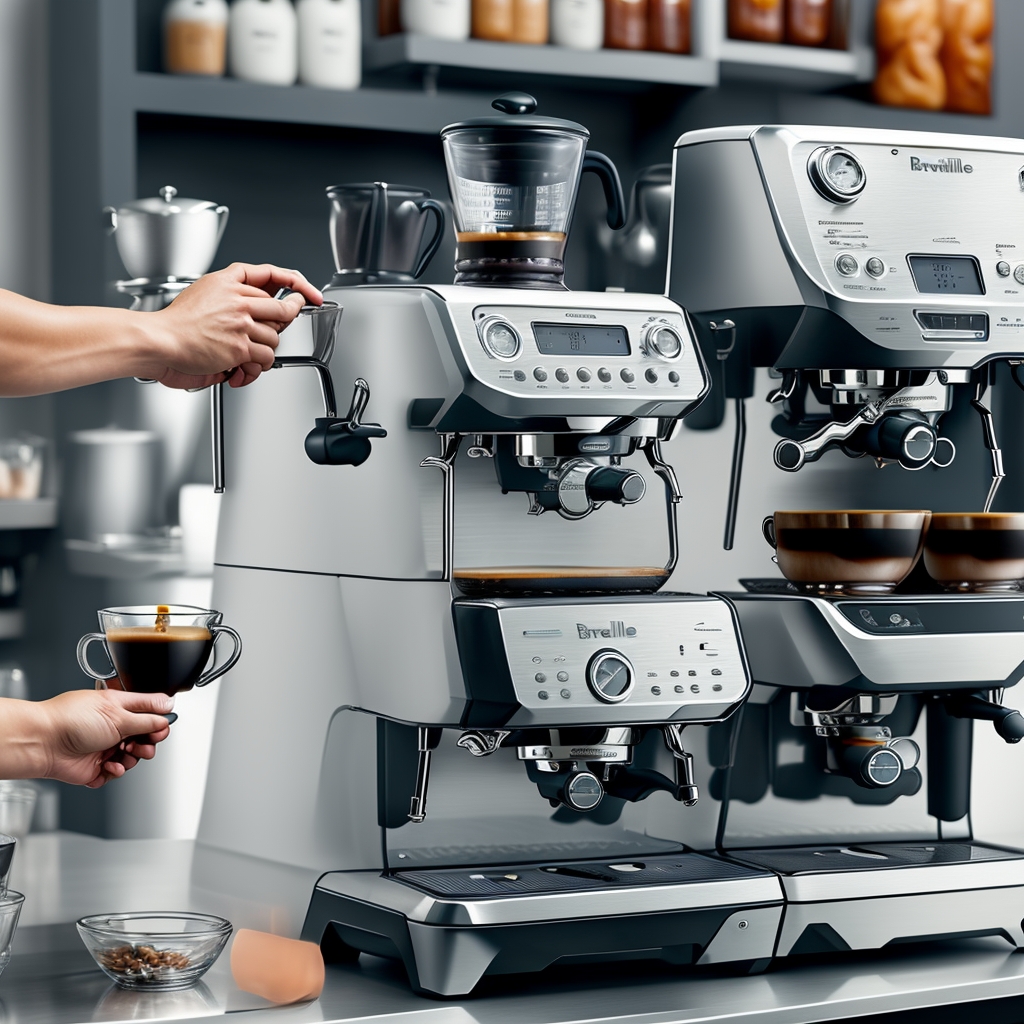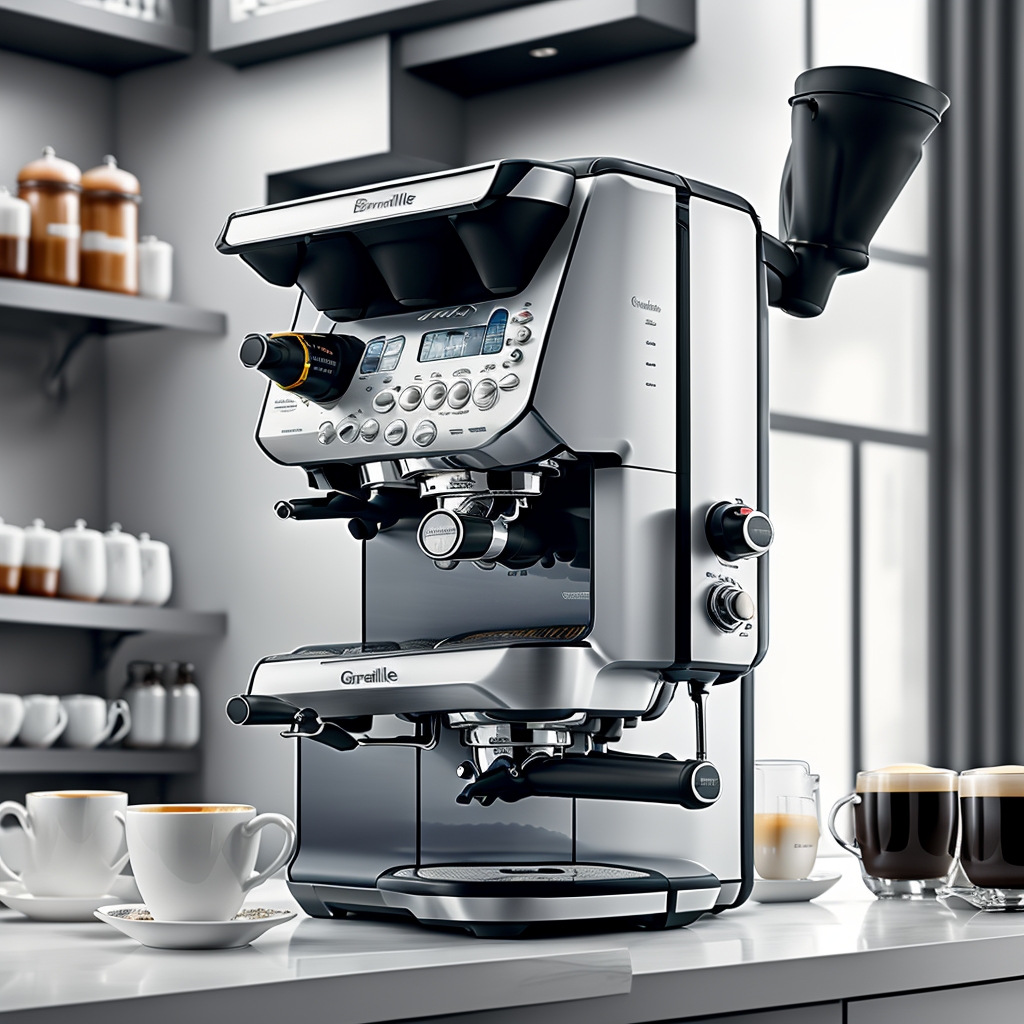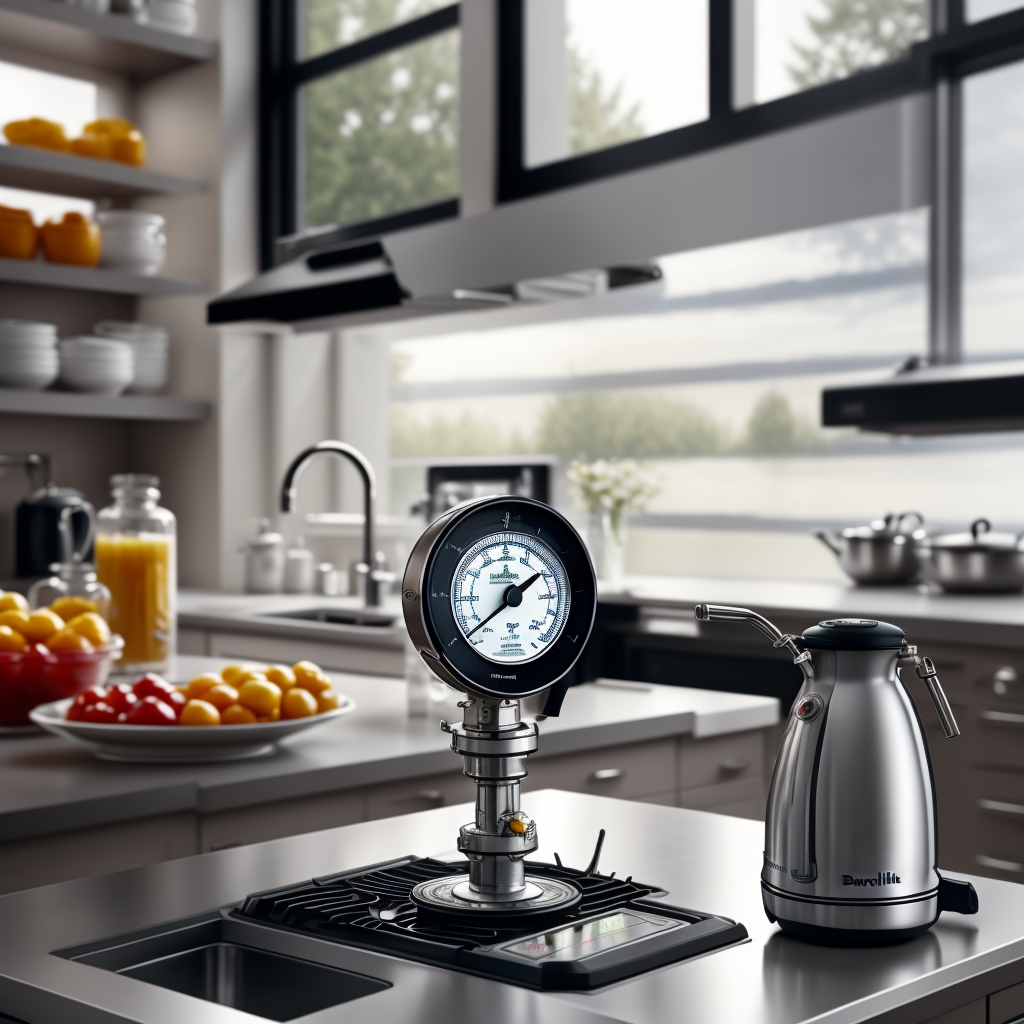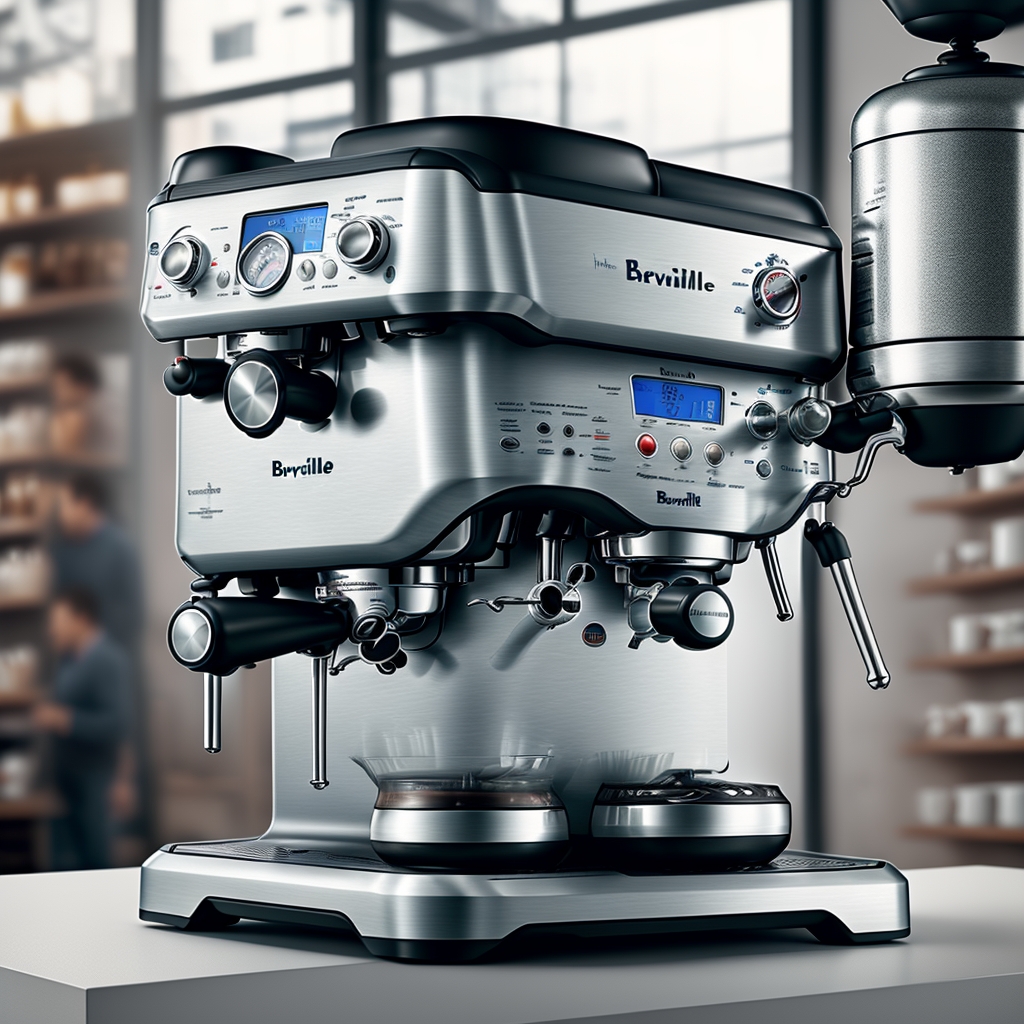Troubleshooting Guide: Unpacking Reasons for Your Breville Pressure Gauge Failure
Isn’t it frustrating when your much-loved Breville Barista Express is acting up, and won’t reach the desired pressure? A well-functioning pressure gauge is the key to pulling that perfect espresso shot. But don’t despair – this troubleshooting guide is here to make sense of it all.
The Puzzling Case of the Non-Working Pressure Gauge
If your pressure gauge doesn’t seem to be working, your first step should be to verify if you’re indeed looking at a malfunction or if it’s simply a misunderstanding of the machine’s functioning. Certain factors could give the impression of a faulty gauge, resulting in a lot of needless worry. For instance, the pressure gauge on the Breville Barista Express only moves when the machine is in ‘extract’ mode – a little-known fact that can cause unnecessary alarm.
Possible Underlying Causes
Once you’ve ruled out these misunderstandings, if your pressure gauge still doesn’t function, you might be looking at a few possible issues. These could range from a blockage in the machine’s outlet, a malfunctioning pump, or in more extreme cases, a faulty control board. Delving into your machine’s inner workings may seem daunting, but we’re here to guide you through.
| Problem | Possible Cause |
|---|---|
| Pressure gauge does not move | Blockage in the outlet, Faulty pump, Faulty control board |

Fit it Like a Pro: Step-By-Step to Testing Your Breville Barista Express Pressure
With a clearer understanding of possible causes for your pressure gauge issues, it’s time to step into the shoes of a barista-cum-technician. Be assured that testing your Breville Barista Express pressure is not as daunting as it may initially appear. This step-by-step guide simplifies the process for you.
Preparing for the Test
The very first step is to ensure that your machine is ready for the test. To do this, make sure it is completely switched off and unplugged. Now, remove and clean the filter basket and portafilter thoroughly. This ensures that we’ve ruled out any potential blockage affecting the pressure.
Performing the Pressure Test
Now onto the test itself! Insert the portafilter back into the machine and switch it on. Wait for it to warm up and reach the normal operating temperature. Now, position a mug under the grouped handle and switch the machine to ‘extract’ mode. Keep an eye on the pressure gauge. If it moves and stabilizes within the correct range of 9-11, you’re in the clear. If it doesn’t, we might be looking at a deeper issue.
Remember that the test may seem more intimidating than it is, and is actually relatively straightforward once you get the hang of it. With careful observation and a calm approach, you can accurately determine whether your Breville Barista Express has a pressure problem or not.

Boosting Breville Barista Express Pressure: Handy Fixes for the Perfect Espresso
Identifying the issue is crucial, but understanding how to fix it can feel like a game-changer. It’s now time to reveal some accessible and effective ways to increase the pressure on your trusted Breville Barista Express machine.
Purge Your Steam Wand
A common fix for low pressure lies within the steam wand. Ensure it’s not clogged by purging it before each use. Steam trapped inside can impact the pressure in your shots, making them weak or uneven.
Cleaning the Group Head
Another frequently overlooked area is the group head. Regular cleaning can vastly improve performance, allowing water to flow more freely and hence boosting the pressure. Try cleaning and rinsing it thoroughly to combat any issues related to low pressure.
Grind Adjustment
If cleaning doesn’t seem to do the trick, try adjusting your grind size. This might seem insignificant, but grind size heavily impacts pressure. Opt for a finer grind, which forces the water to work harder to pass through, resulting in an increase in pressure.
Checking the Water Reservoir
Lastly, always check for issues with your water reservoir. A loosely fitted or damaged reservoir can disrupt proper flow, affecting your machine’s pressure. Make sure it’s snug, clean, and in good shape.
Getting the perfect pressure might involve a few trials, but by following these fixes, you can enhance your experiences and achieve that exemplary espresso shot you’re after.

Avoiding Over-Pressure: Keeping Your Breville Barista Express in Check
Ever wondered what happens when the pressure in your Breville Barista Express is too high? Over-pressure can be just as problematic as under pressure. Therefore, knowing how to maintain a balanced pressure can make a world of difference to your espresso shots.
Understanding the Over-Pressure Issue
Over-pressure typically results in fast-flowing, diluted espresso shots with a lack of depth and complexity in the flavor profile. Understanding its causes is the first step in maintaining the desired pressure range on your machine.
Examine the Pressure Gauge
Is the pressure gauge peaking beyond the ‘Espresso Range’? Frequent occurrences could be a sign of over-pressure. Taking periodic readings of the pressure gauge helps to regulate pressure effectively in your machine.
Grind Size and Tamping Pressure
Just as a finer grind can solve low pressure problems, too fine a grind or too hard a tamp can cause over-pressure. Adjusting your grind size to be coarser and applying less tamp pressure could help you strike the right balance.
Monitor Water Temperature
Water temperature plays a pivotal role in the creation of a good espresso shot. Overly hot water can escalate pressure levels in the machine. Ensure your water temperature is just right – not too hot, not too cold.
Navigating the world of espresso making is a delicate art, knowing how to avoid over-pressure is just one part of creating the perfect cup. Continue to experiment and adjust according to your Breville machine’s unique characteristics.

Save Your Steam – What to Do If Your Breville Gauge Fails to Reach Pressure
At times, despite our best efforts, our Breville Barista Express pressure gauge might refuse to reach the optimum pressure. Don’t fret, as we proceed to explore the possible causes and their remedies for this issue.
Identifying the Problem
Inconsistent or weak pressure in your Breville machine could lead to under-extracted espresso, which could be sour or lacking in flavor. If the gauge barely moves, you likely have a pressure problem.
Check Your Machine’s Pump
A faulty pump could be the culprit behind the low pressure. A simple way to test the state of your pump is by running a ‘blank shot’ (water without any coffee grounds). If the pressure is still low, chances are you might need to repair or replace the machine’s pump.
Ensure Proper Cleaning
Is your Breville machine thoroughly cleaned? A build-up of coffee grinds and oils can severely affect the pressure of your machine. Regular cleaning and descaling can help maintain the optimal pressure.
Examine the Coffee Grind
A frequent mistake is using a grind that’s too coarse. A fine grind is essential for creating suitable resistance to build the pressure needed for a creamy, rich espresso.
Remember, none of these solutions are one-size-fits-all. What works for you depends on your unique machine and coffee-making habits. Keep experimenting, and sharing your journey with fellow Breville enthusiasts.

Breville Barista Pressure Troubles: Comprehensive FAQ to Save Your Day
As we wind down on our exploration of Breville espresso machine pressure issues, let’s answer some frequently asked questions. These answers will broaden your understanding and help you implement practical solutions more effectively.
FAQ 1: Why does the Breville pressure gauge not register pressure?
This problem can be caused by an assortment of factors ranging from a blocked portafilter basket or group head, a failing pump, a faulty gauge, or even an incorrect grind size. Examining these aspects systematically can help identify the root cause.
FAQ 2: Can I rectify low pressure issues without professional help?
While certain issues like pump replacement might need professional intervention, factors like cleaning, descaling, and adjusting grind size can be done at home. Patience and regular maintenance are the key to a long-lasting machine.
FAQ 3: How does grind size affect the pressure?
The grind size directly impacts the espresso extraction. A fine grind creates resistance required to build optimal pressure. However, a grind that’s too fine can cause over-extraction and too high pressure, leading to a bitter espresso.
| Issue | Solution |
|---|---|
| Blocked portafilter basket | Clean and descale regularly |
| Failing pump | Seek professional assistance for replacement |
| Incorrect grind size | Experiment with grind sizes for optimal extraction |
As we conclude our immersive guide, we remind you that being attentive to your Breville Barista Express machine’s needs will ensure it continues to brew the perfect cup of espresso. From regular cleaning to tweaking grind size, every detail counts. And yet, every problem has a solution. Just remember to read and understand your machine well, and you’ll be a master in no time!
